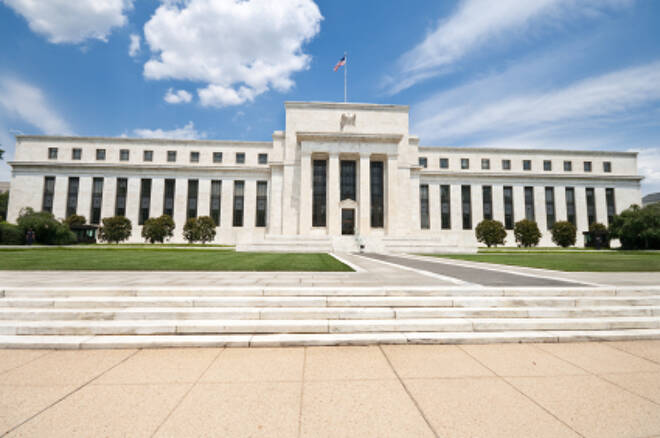Advertisement
Advertisement
Divergence Between Central Bank Policies Drives U.S. Dollar Index to 4-Month High
By:
September U.S. Dollar Index futures posted a strong gain last week, rising to a more than a four-month high on the back of positive U.S. economic data and
September U.S. Dollar Index futures posted a strong gain last week, rising to a more than a four-month high on the back of positive U.S. economic data and weak assessments of overseas economies. The U.S. economy’s positive showing prompted investors to re-evaluate the possibility of a U.S. Federal Reserve interest rate hike before its December meeting at a time when other major central banks were considering interest rate cuts or additional stimulus.
The divergence between the Fed’s monetary policy and that of its global peers boosted the US Dollar Index to 97.585, its highest level since March 10, before closing the week at 97.516, up 0.953 or +0.99%.
The U.S Dollar rallied to a six-week high against the Japanese Yen last week but reached its peak at 107.486 after Bank of Japan chief Haruhiko Kuroda said the bank saw no need to stimulate the economy with “helicopter money”.
Sellers drove the Japanese Yen lower most of the week on the news that Tokyo was considering a 20 trillion package of stimulus to bolster the economy. The currency later recovered 1 percent after the Kuroda’s comment. The USD/JPY closed the week at 106.037, up 1.229 or +1.17%.
The AUD/USD finished the week sharply lower at .7461, down 0.0115 or -1.51%. The selling pressure was fueled by the Reserve Bank of Australia’s minutes from its last monetary policy committee meeting which left the door open for another rate cut in August. The central bankers are likely to base their important decision on the results of the quarterly inflation report, due to be released on July 27.
The minutes showed that there does not appear to be any heightened concern about the current level of the Australian Dollar. The Board’s outlook on inflation was less encouraging. The RBA’s surveys and measures of inflation expectations noted that inflation “remained below average”.
The NZD/USD was also a big loser last week, falling to its lowest level since June 8 before settling the week at .6997, down 0.0116 or -1.62%. The catalyst behind the selling pressure was a signal from the Reserve Bank of New Zealand of more interest rate cuts to come.
“At this state, it seems likely that further monetary policy easing will be required to ensure that future average inflation settles near the middle of the target range,” the central bank said in an economic update. The next rate review is August 11 and the bank is widely expected to cut the rate from 2.25 percent to 2 percent. Economists also say there may be further cuts this year.
About the Author
James Hyerczykauthor
James is a Florida-based technical analyst, market researcher, educator and trader with 35+ years of experience. He is an expert in the area of patterns, price and time analysis as it applies to futures, Forex, and stocks.
Did you find this article useful?
Latest news and analysis
Advertisement
